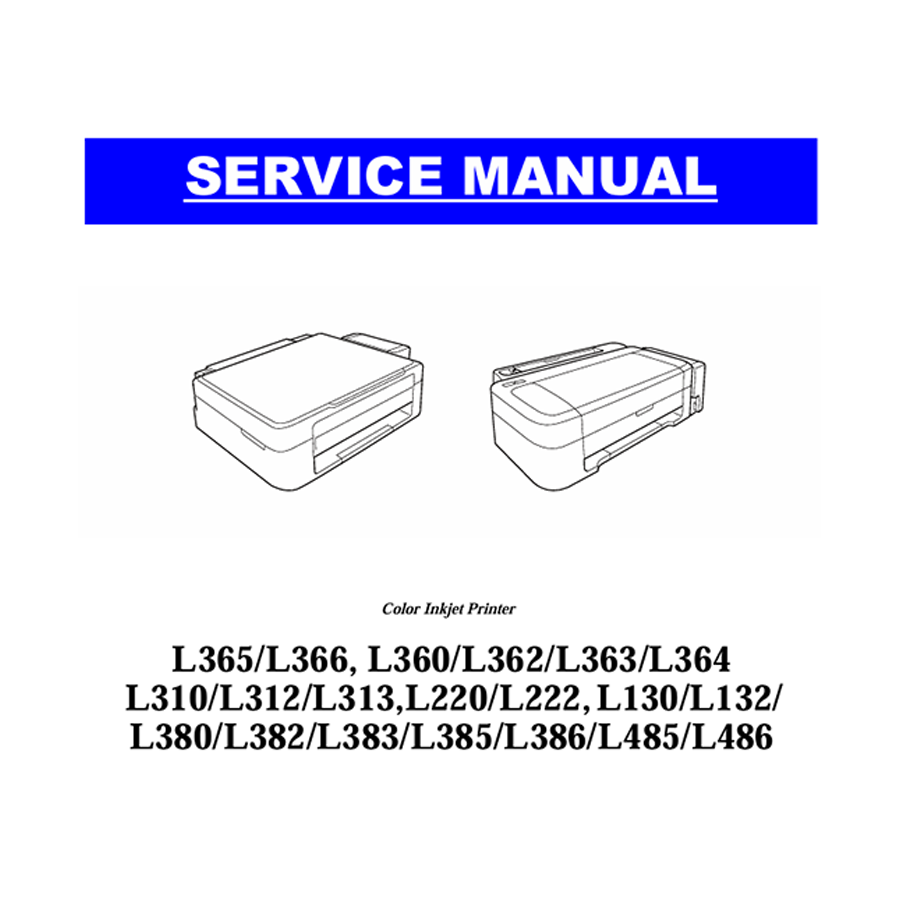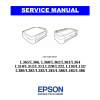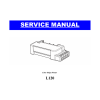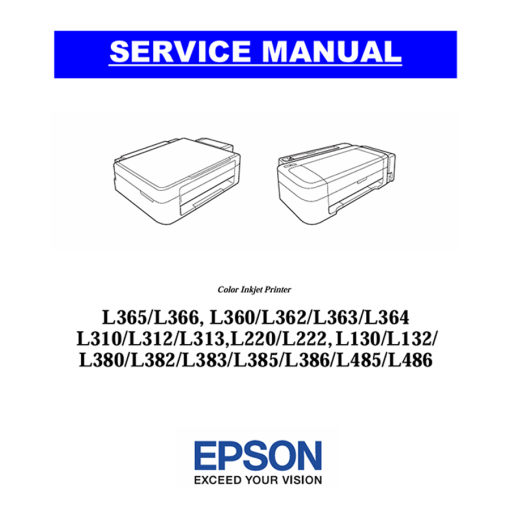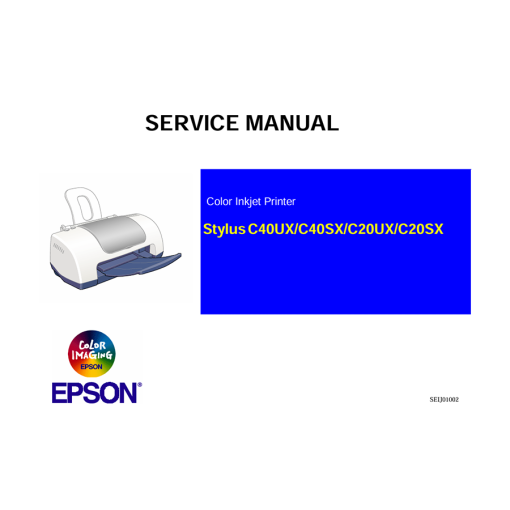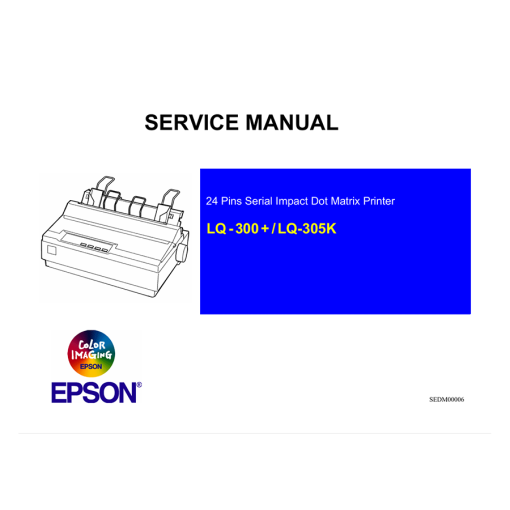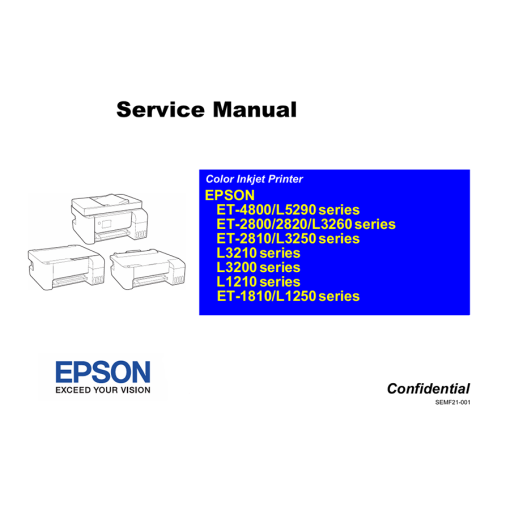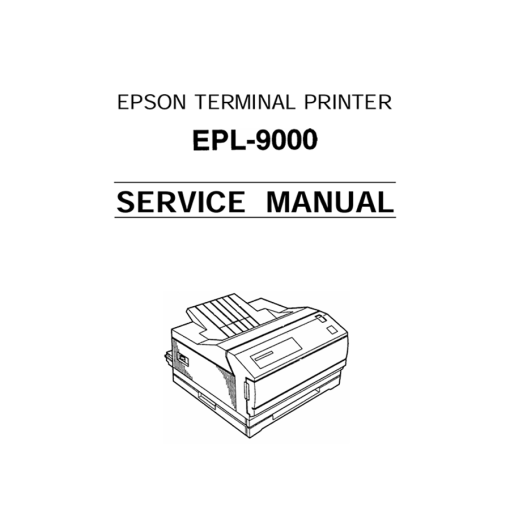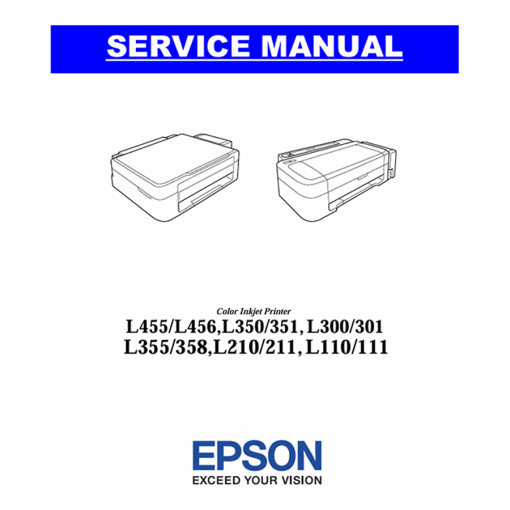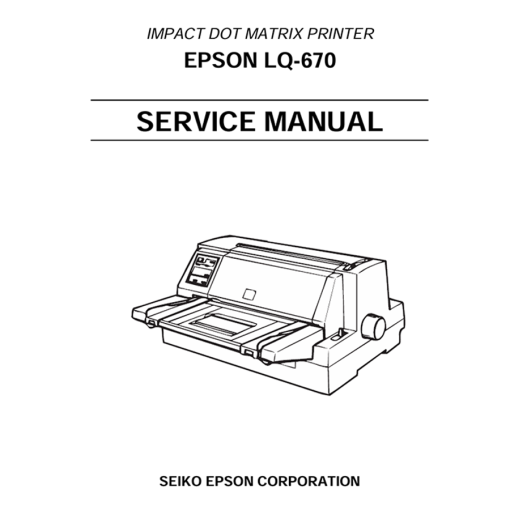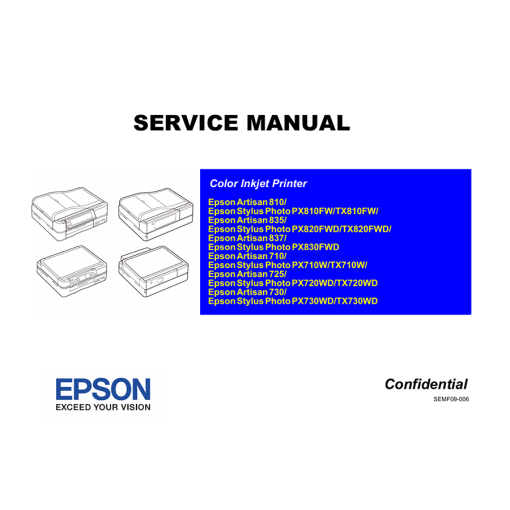Subtotal: 0 $
Epson Service Manual: The Ultimate Repair & Maintenance Guide for Your Epson EcoTank L-Series Inkjet Printers (L36x, L31x, L22x, L13x Series)
0 $
Are you an owner of one of Epson’s widely popular EcoTank L-Series inkjet printers, such as the L365, L366, L360, L362, L363, L364, L310, L312, L313, L220, L222, L130, or L132? These versatile machines, known for their innovative integrated ink tank systems and remarkably low printing costs, are central to countless homes and small offices. While designed for robust daily use, like any piece of technology, they can encounter issues that disrupt your printing workflow. Instead of incurring costly professional service fees or considering premature replacement, imagine having the precise technical expertise to diagnose and resolve problems yourself. This is exactly where the comprehensive Epson Service Manual for these L-Series models becomes your indispensable repair and maintenance companion.
What is an Epson L-Series Inkjet Printer Service Manual?
The Epson L365, L366, L360, L362, L363, L364, L310, L312, L313, L220, L222, L130, L132 Service Manual is Epson’s official, highly detailed technical document created for this extensive family of EcoTank inkjet printers. Unlike the basic user manual that accompanies your printer, this service manual is specifically designed for trained service technicians and ambitious DIY enthusiasts. It provides an in-depth look into the intricate mechanical, electrical, and firmware systems unique to these ink tank models. It’s essentially the complete blueprint, guiding you through every step of understanding, troubleshooting, disassembling, repairing, and accurately reassembling your printer.
Key Repair Information and Contents You’ll Discover Inside This Manual
This comprehensive service manual is a goldmine of technical data, absolutely vital for anyone looking to perform in-depth maintenance or repairs on their Epson L-Series EcoTank printer. You can expect to find:
- Product Description and Specifications: A thorough overview of the various models covered within this series, outlining their features, technical specifications (e.g., print speed, resolution, paper handling, connectivity options), and core components, emphasizing their Piezoelectric print head technology and integrated ink tank system.
- Operating Principles / Theory of Operation: Detailed explanations of how the printer’s various mechanisms function. This includes:
- The unique ink delivery system (how ink flows from the external tanks to the print head).
- Precise print head operation and carriage movement.
- Paper feeding mechanisms, from input tray to output.
- Crucial waste ink management (including details on the waste ink pads, which are a common maintenance concern for these models).
- Safety Information: This section is paramount. Working with electrical components and moving parts requires careful attention to safety. The manual will contain explicit warnings and precautions, emphasizing how to safely disconnect power, handle sensitive electronic components (like the main board), and prevent ink spills or exposure. Always prioritize your safety by carefully reading and following these guidelines.
- Disassembly and Assembly Procedures: Step-by-step, clearly illustrated instructions guiding you through the safe and correct method for taking apart and putting back together every section of your printer. This is crucial for accessing internal components such as the print head, paper rollers, sensors, or logic boards for cleaning, inspection, or replacement.
- Troubleshooting Guides: Extensive sections dedicated to diagnosing common problems. These are often presented with logical flowcharts and tables, helping you pinpoint the root cause of an issue based on observed symptoms or error codes. This includes:
- Error Code List: A comprehensive enumeration of all diagnostic error codes that your L-Series printer might display (often via flashing lights on the control panel or status monitor), detailing their meaning and recommended steps for resolution. Common issues like “Service Required” errors (which frequently indicate the waste ink pad counter needs to be reset) are typically covered in detail.
- Print Quality Issues: In-depth guidance on troubleshooting and resolving common print defects such as banding, missing lines, faded colors, streaks, blurry prints, or incorrect color output. Solutions often involve specific cleaning cycles, print head alignments, or identifying component failures.
- Paper Handling Problems: Solutions for various paper jams (including instructions on how to safely clear them and identify their exact location), misfeeds, or issues with paper not picking up correctly from the input tray.
- Ink System Issues: Specific troubleshooting for ink flow problems, air bubbles in ink tubes, or difficulties with the integrated ink tank system.
- Adjustment Procedures: Precise instructions for calibrating various parts of the printer after repairs or component replacements to ensure optimal print quality and consistent paper feeding. This often includes print head alignment and sensor calibrations.
- Maintenance Procedures: Guidelines for preventive maintenance, including routine cleaning instructions for the print head, rollers, and internal components. Importantly, it will also detail how to manage and potentially reset the waste ink pad counter, which is a critical maintenance requirement for these EcoTank models.
- Circuit Diagrams and Wiring Diagrams: For those with electronics expertise, these detailed diagrams provide a visual representation of the printer’s electrical systems, component layouts on printed circuit boards (PCBs), and precise wiring connections, enabling advanced electrical diagnostics.
- Exploded Diagrams and Parts List: Visual breakdowns of the printer’s various assemblies, showing every component in an exploded view with its corresponding part number. This is incredibly useful for identifying and ordering the correct replacement parts from suppliers like diyinkjet.com.
Why This Epson Service Manual is an Indispensable Repair Resource
For dedicated owners and DIY enthusiasts working with any of the Epson EcoTank L-Series printers covered by this manual, it offers profound benefits:
- Significant Cost Savings: Empower yourself to perform many common maintenance tasks and repairs in-house, drastically reducing expenses on external technician visits and costly service contracts. This is particularly valuable for models that are no longer under warranty or for which local service options might be limited.
- Minimized Downtime: Quickly identify and resolve issues, getting your essential printer back into operation faster and minimizing disruption to your personal or business printing needs.
- Extended Printer Lifespan: Proactive maintenance and accurate repairs, guided by official procedures, help maximize the operational life of your valuable EcoTank investment, making it a truly sustainable choice.
- Empowerment Through Knowledge: Gain a deep and practical understanding of your printer’s unique EcoTank technology and internal mechanisms, leading to greater confidence in tackling future problems independently.
- Sustainable Practices: Repairing and extending the life of your equipment rather than discarding it contributes positively to reducing electronic waste and promotes a more environmentally responsible approach to technology.
Related products
Epson Service Manual
Epson Service Manual: The Essential Guide for Your Epson C2040UX_B Inkjet Printer
Epson Service Manual
Epson Service Manual: The Definitive English Repair Guide for Your Epson EPL-9000 Laser Printer
Epson Service Manual
Epson Service Manual: The Definitive Guide for Your Epson LQ-670K (and LQ-670) Dot Matrix Printer

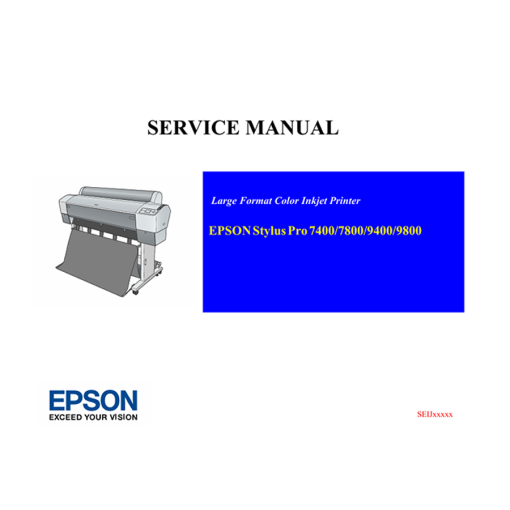 Epson Service Manual: The Ultimate Guide for DIY Printer Repair (Epson 7400, 7800, 9400, 9800 Series)
Epson Service Manual: The Ultimate Guide for DIY Printer Repair (Epson 7400, 7800, 9400, 9800 Series) 